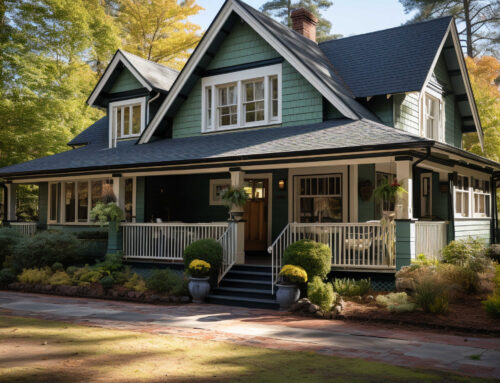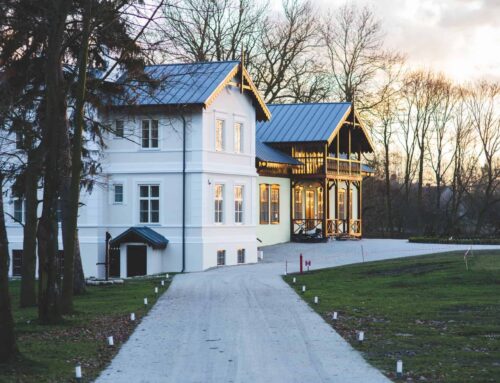Is staging a home in San Francisco worth it?
 Staging a home before putting it on the market is a crucial step in the real estate selling process. It enhances the property’s appearance and significantly impacts its sale price and how quickly it sells. This blog post delves into the importance of home staging and the return on investment (ROI) homeowners can expect from staging their property.
Staging a home before putting it on the market is a crucial step in the real estate selling process. It enhances the property’s appearance and significantly impacts its sale price and how quickly it sells. This blog post delves into the importance of home staging and the return on investment (ROI) homeowners can expect from staging their property.
The Importance of Home Staging
Home staging prepares a home for sale by making it look its best to potential buyers. This involves bringing in furniture, adding decorative elements, and minor repairs. The goal is to showcase the home’s best features, maximize its appeal, and make it feel welcoming and move-in-ready for buyers. Here are key reasons why staging is crucial:
First Impressions Matter: When potential buyers walk into a home, the first impression can make or break their interest. A well-staged home presents a clean, organized, and attractive space that can instantly appeal to buyers, encouraging them to envision themselves living there.
Highlighting the Home’s Potential: Staging allows sellers to highlight the best aspects of their home while minimizing any flaws. By strategically arranging furniture and décor, stagers can showcase the functionality of each space, making rooms appear larger, brighter, and more inviting.
Helping Buyers’ Imaginations: When presented with unstaged homes, most buyers have difficulty imagining how they might use the space. Imagine walking into a house completely empty of furniture. The house will appear cold and uninviting. Buyers will ask themselves, “Where would the couch go? How do I set up this room?”. Staging helps give buyers a way to envision themselves living in that property.
Emotional Connection: Staged homes are designed to evoke an emotional response from potential buyers. A beautifully staged home creates a warm and inviting atmosphere that can make buyers feel an emotional connection, making them more likely to make an offer.
Creating a Clean Slate: When buyers walk into a home, they want to imagine themselves living in that property. They don’t want to see your family’s heirloom dresser. They don’t have any emotional attachment to that piece of furniture like you do, and it’s not their style. And while the dresser isn’t coming with the house, it nevertheless changes how the buyer sees the property.
Competitive Edge: In a competitive market, standing out from the crowd is essential. A staged home is more likely to attract attention from buyers and real estate agents, resulting in more showings and, potentially, multiple offers.
Faster Sales: Statistics show that staged homes sell faster than non-staged ones. According to the National Association of Realtors, 83% of buyers’ agents said staging a home made it easier for buyers to visualize the property as their future home, often leading to quicker sales.
The ROI of Home Staging
Investing in home staging may seem like an additional expense, but it can significantly increase the home’s sale price, offering a substantial return on investment. Here are some points to consider regarding the ROI of home staging:
Higher Sale Price: Staged homes usually sell for more than their non-staged counterparts. The Real Estate Staging Association found that staged homes spend 73% less time on the market and often sell for up to 10% more than unstaged homes.
Cost vs. Benefit: While the cost of staging varies depending on the size of the home and the level of staging required, the investment is typically far less than the first price reduction a seller might have to make if the home doesn’t sell quickly. Investing in staging upfront can prevent the need for price reductions later.
Appeal to Online Shoppers: In today’s digital age, most homebuyers start their search online. Professionally staged homes photograph better and are more likely to catch the eye of potential buyers scrolling through listings, increasing the likelihood of in-person showings.
Avoiding Stale Listings: Homes that linger on the market tend to become “stale” and may lead to lower offers. Staging can help make a strong initial impact, reducing the risk of the home sitting on the market for too long.
In conclusion, home staging is more than just a cosmetic enhancement; it’s a strategic marketing tool that can lead to a faster sale and a higher selling price. The investment in staging offers a significant ROI by appealing to potential buyers’ emotions, highlighting the home’s potential, and giving sellers a competitive edge. Whether selling a cozy condo or a spacious family home, staging is a crucial step in the selling process that should not be overlooked.
[/fusion_text][/fusion_builder_column][/fusion_builder_row][/fusion_builder_container]




